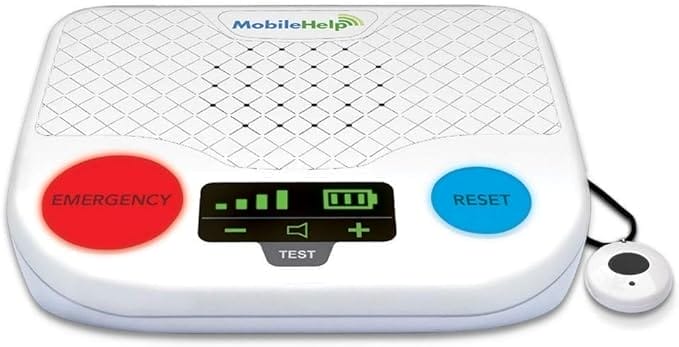[Last updated March 29, 2024]

The cost of assisted living can be high, with prices varying depending on your area. Genworth’s latest Cost of Care Survey found that the national median monthly cost of assisted living is over $5,000. Moving to assisted living is an excellent choice for an older adult who wants to live a maintenance-free life and have access to help with activities of daily living, social opportunities, and more, but you may wonder how you can cover the cost. Here, we’ll go over how to pay for assisted living, including using different types of insurance, various private funding sources, and VA benefits.
Use the proceeds from a home sale
Senior homeowners who are moving to assisted living may have a significant amount of equity in their homes. Selling their home can generate cash to help pay for assisted living costs.
The median home sale price in the United States was $417,700 in 2023, according to the Federal Reserve Bank of St. Louis. Though this amount will vary depending on many factors, the capital a person can liquidate through the sale of their home can come in handy for funding senior living.
Obtain a bridge loan while waiting for permanent funds
The need to move to assisted living sometimes happens quickly, such as after a person sustains an injury or another unforeseen circumstance. A bridge loan is a short-term loan that provides a lump sum to cover immediate expenses at assisted living before permanent funds are available.
People who want to sell their homes and use the funds for assisted living might be good candidates for bridge loans if they need the capital to move to senior living. Even in a fast-paced real estate market where homes sell quickly, emptying the house and going through the closing process require time. If time is of the essence, a bridge loan can help a person pay for the immediate costs of senior living.
Another situation in which a bridge loan could help is when an individual has submitted their Veterans benefits application but needs to move to assisted living quickly. Applications for benefits like Aid and Attendance take time to process, but using a bridge loan can help the applicant move to a community to get the daily long-term care they need as soon as possible. When the application is approved, the senior can repay the loan and use the continuing benefits to help pay for assisted living.
Claim on your long-term care insurance policy
Long-term care insurance (LTCi) is a type of insurance policy designed to help pay for personal care (also known as custodial care) in various residential settings. It can cover the costs of services that traditional health insurance, like Medicare, doesn’t cover, such as assistance with activities of daily living (bathing, grooming, dressing, toileting, feeding, transferring from one position to another, and ambulating). Long-term care insurance policyholders who meet certain criteria can use their policy to help pay for assisted living.
How your LTCi policy will help cover assisted living costs varies because of factors like the policy terms and your situation. Typically, LTCi policies have “trigger events,” which are the circumstances it requires to be in effect in order for the policyholder to make a claim on the policy. For example, a policy may require that the policyholder require help with at least two activities of daily living before they can make a claim.
If you meet the requirements, many policies reimburse you for expenses of rendered services up to a certain maximum amount per day. This maximum daily benefit varies depending on your policy as well. Whether the maximum daily benefit is $50 or $500, using LTCi can go a long way in helping cover the cost of assisted living.
Use your life insurance policy
Though you may typically think of life insurance as protection for your beneficiaries after your passing, some life insurance policies can help pay for assisted living during your lifetime. Whether you can use your policy while you’re alive depends on the type of policy, if you have the additional coverage of particular riders on your policy, and if you meet certain health requirements.
You may be able to settle your policy with a life settlement, which essentially is selling the policy to a third-party company. When the company buys the policy, you receive a lump sum to do with as you wish, including paying for assisted living. The company takes over the premium payments and also becomes the beneficiary after your passing. While the beneficiaries you originally noted on your policy will no longer receive your death benefit, using a life settlement can give you access to funding to pay for the long-term care you need.
Viatical settlements work differently from life settlements but can still help pay for assisted living under the appropriate circumstances. To qualify for this type of settlement, you need to meet certain health criteria and have a life expectancy of typically less than two years. You settle the policy, receive the funds, and can pay for assisted living using the money.
Your policy may also have riders, or add-ons, which can help cover assisted living under certain circumstances. Some policies have long-term care riders, accelerated death benefits, or other additional features that can help fund your care.
Each policy is different, so it’s important to speak with your policy’s provider or a trained expert who can determine if you can use your policy to pay for care and if it is the best choice for your situation.
Use VA benefits to help pay for assisted living
Older adult U.S. military Veterans who meet certain criteria can utilize various benefits to help with assisted living costs. Aid and Attendance is a benefit reserved for Veterans and their spouses who meet requirements related to the Veteran’s military service, net worth and assets, and health criteria. Qualifying U.S. military Veterans and their spouses can potentially receive over $2,000 in additional income each month with the Aid and Attendance benefit, which can be used to cover the cost of assisted living.
Use retirement income and private savings
Many assisted living residents cover the costs with private funds, such as retirement savings. Individuals who contributed to employer-sponsored and other types of retirement accounts for years have likely invested a good deal of money and have hopefully seen it grow over time. Many seniors turn to these savings to fund assisted living.
Though assisted living can be costly, this senior living solution can provide an older adult with the care they need in a homelike setting with many other added benefits. The numerous payment options available can make assisted living a viable residential setting for many seniors.








